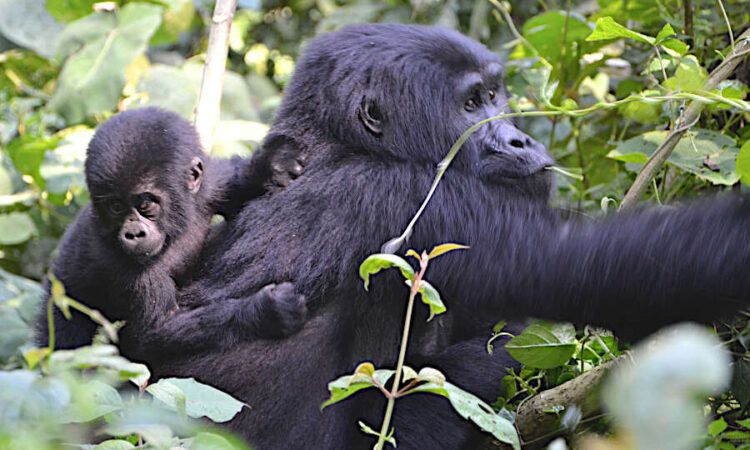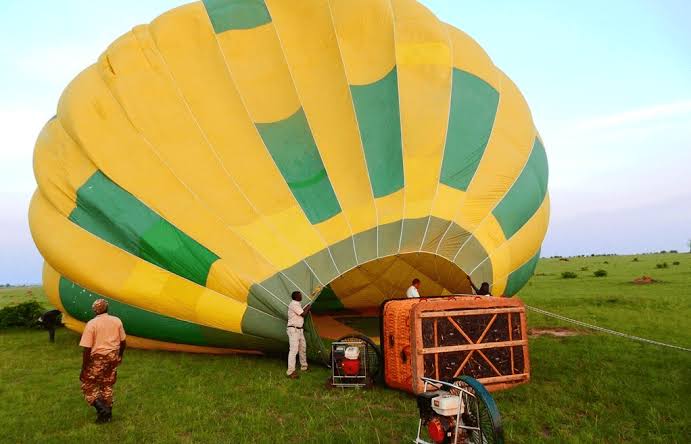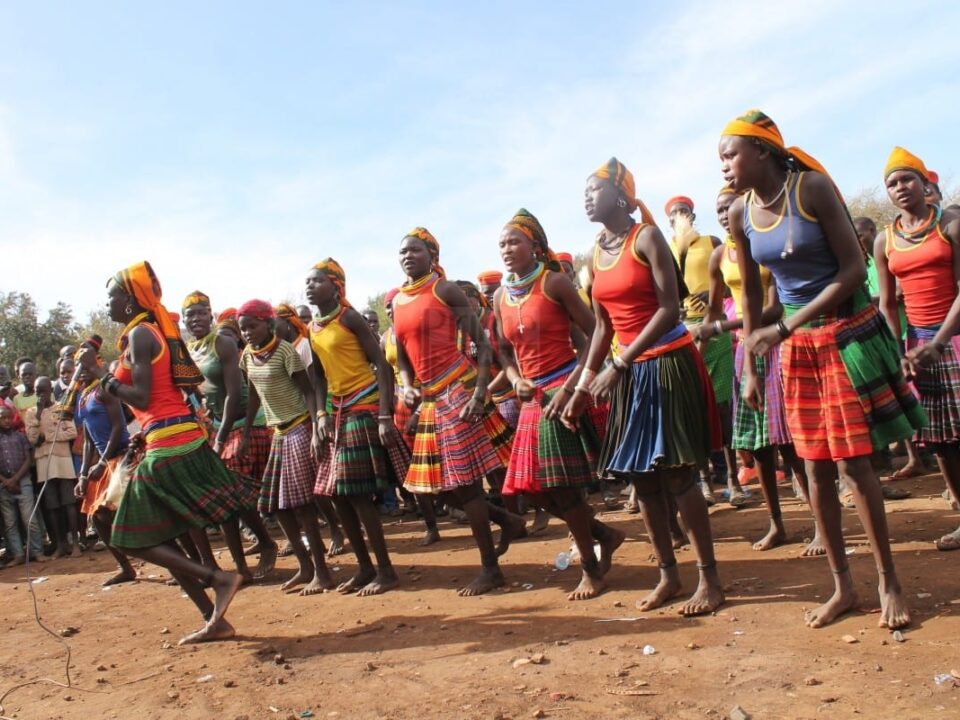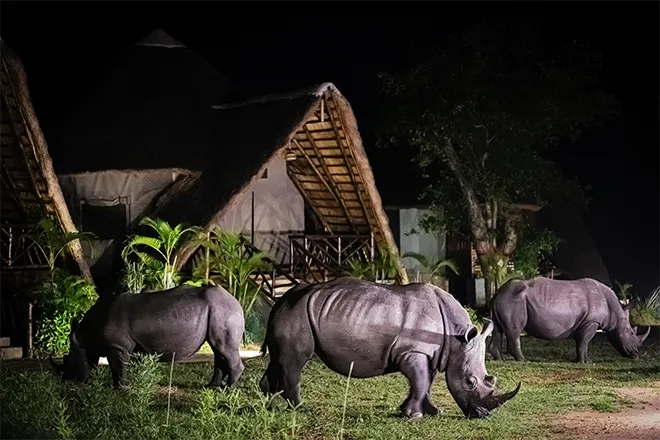- GET IN TOUCH WITH US:
- +256 753518160
- +256 777842166
- info@experiyatourcompany.com

How can I combine Kenya and Uganda in one safari?
November 20, 2025
What’s the best Kenya–Rwanda itinerary?
November 20, 2025Can I Do Gorilla Trekking After a Kenya Safari?
Many travelers planning an East African adventure dream of experiencing both Kenya’s iconic savannah safaris and the mystical rainforest trek to see mountain gorillas. Kenya is world-famous for its Big Five wildlife, sweeping plains, and dramatic sunsets—while gorilla trekking in Uganda or Rwanda offers a once-in-a-lifetime encounter with one of the world’s most endangered and awe-inspiring primates. So a common question arises: Can I do gorilla trekking after a Kenya safari? The answer is yes—absolutely, and it is one of the most rewarding combined journeys in East Africa.
Pairing a Kenya safari with gorilla trekking allows travelers to enjoy two vastly different but perfectly complementary experiences. Kenya’s landscapes, from the Maasai Mara and Amboseli to Samburu and Tsavo, offer classic African wildlife adventures filled with lions, elephants, cheetahs, rhinos, giraffes, buffalo, and countless other species. Uganda or Rwanda, on the other hand, immerses you in lush forests, mist-covered mountains, and intimate encounters with mountain gorillas—gentle giants whose family dynamics and emotional connection leave travelers deeply moved. Together, these destinations create a magical fusion of safari exhilaration and serene, primal wonder.
Why Combine Kenya’s Big Five Safari With Gorilla Trekking?
There are several powerful reasons why combining these two experiences is so popular among seasoned travelers:
The ultimate diversity in wildlife
Kenya gives you open-plains predators, massive elephant herds, and vast savannah ecosystems. Gorilla trekking gives you rare primates in dense, ancient forests. The contrast is stunning.
Two different worlds in one trip
You transition from dry grasslands to tropical highlands without ever leaving East Africa.
Convenient flight routes
Kenya connects seamlessly to both Uganda and Rwanda through direct flights, making the combination smooth and efficient.
East Africa Tourist Visa
One visa allows you to travel through Kenya, Uganda, and Rwanda, simplifying logistics significantly.
A balanced and unforgettable safari
The adrenaline of predator sightings blends beautifully with the emotional depth of gorilla encounters.
If you dream of a complete East African safari, this combination gives you everything in one itinerary.
How to Combine Kenya Safari With Gorilla Trekking
There are two main ways to do this combination:
1. Kenya Safari + Uganda Gorilla Trekking
This is the most common route because Uganda offers more affordable gorilla trekking permits and a wider range of trekking regions. Uganda’s trekking areas include:
Bwindi Impenetrable National Park
Mgahinga Gorilla National Park
Most travelers trek in Bwindi, home to multiple gorilla families and stunning rainforest scenery.
2. Kenya Safari + Rwanda Gorilla Trekking
This route offers easier logistics because the gorilla trekking region in Rwanda—Volcanoes National Park—is close to Kigali. The trek is often shorter and more accessible, making it ideal for travelers who prefer quicker travel transitions and luxury lodges.
The Best Safari Destinations in Kenya Before Gorilla Trekking
You can begin your journey in any of Kenya’s world-class parks. Some of the most popular choices include:
Maasai Mara
Kenya’s most famous safari destination, known for big cats, wildebeest migration (July–October), and incredible game viewing.
Amboseli National Park
The best place in Africa to see elephant herds against the backdrop of Mount Kilimanjaro.
Samburu National Reserve
Home to unique northern wildlife species such as the Grevy’s zebra, reticulated giraffe, and gerenuk.
Tsavo East & Tsavo West
Massive wilderness areas known for red elephants, rugged scenery, and fewer crowds.
Laikipia Conservancies
Luxury conservancies offering rhino tracking, walking safaris, and exclusive wilderness experiences.
Whether you prefer a classic national park safari or private conservancy luxury, Kenya provides the perfect wildlife introduction before your gorilla adventure.
How to Travel From Kenya to Gorilla Trekking Destinations
Travelers have several seamless flight options.
From Kenya to Uganda
You can fly:
Nairobi to Entebbe
Nairobi to Kisoro (seasonal flights)
Nairobi to Kihihi (for Bwindi)
After arriving in Uganda, you proceed by road to Bwindi—typically 4 to 8 hours depending on your trekking sector.
From Kenya to Rwanda
Travelers often fly:
Nairobi to Kigali (direct)
Nairobi to Kamembe (southern Rwanda)
From Kigali, it’s only a 2.5 to 3-hour drive to Volcanoes National Park—making Rwanda the quickest gorilla trekking option.
How Long Should the Combined Trip Be?
A Kenya + Gorilla Trekking safari typically lasts:
7–10 days (fast route)
10–14 days (ideal, more relaxed)
15+ days (ultimate extended safari)
A perfect sample breakdown might look like:
4–6 days in Kenya (Mara + Amboseli or Samburu)
3–4 days in Uganda or Rwanda for gorilla trekking
Optional: Add chimp trekking or Queen Elizabeth National Park in Uganda
This itinerary feels balanced, enjoyable, and packed with memorable experiences.
What Gorilla Trekking Is Like After a Kenya Safari
Many travelers say gorilla trekking is the emotional climax of their East African journey. After thrilling days of lions, elephants, and dramatic landscapes, entering a misty rainforest feels like stepping into another world.
A typical trekking day includes:
Early morning briefing
Forest trekking (1–4 hours)
One magical hour with the gorillas
Photography opportunities
Return hike
Gorilla trekking certificate ceremony
Seeing mountain gorillas up close—watching babies play, listening to silverbacks growl softly, and witnessing their human-like behavior—creates a deep, almost spiritual connection.
Fitness Levels and Trek Difficulty
Gorilla trekking requires moderate fitness because of steep terrain, dense forests, and unpredictable weather. But trained rangers and porters assist trekkers of all ages.
Porters are highly recommended—they carry daypacks and help navigate tricky terrain while supporting local livelihoods.
Why Many Travelers Prefer Kenya First and Gorillas Second
Ending your journey with gorilla trekking creates a powerful emotional finale. After the excitement of the savannah, you transition into a quiet, mystical experience that many describe as soul-stirring.
Reasons to trek gorillas last:
It feels like the climax of the trip
The emotional impact is stronger
The rainforest is a peaceful way to conclude your safari
Memories of the gorillas stay with you long after you return home
Travelers often say that ending with gorillas makes the trip feel complete.
Combining Chimp Trekking With Gorillas After Kenya
If you want to enrich your primate experience, Uganda offers exceptional chimp trekking in:
Kibale Forest
Budongo Forest (near Murchison Falls)
Kyambura Gorge
Chimp trekking is energetic and fascinating, offering a different kind of primate encounter that complements gorilla trekking beautifully.
Rwanda vs. Uganda for Gorilla Trekking After Kenya
Here’s how the two compare:
Uganda
More affordable permits
More trekking regions
Longer treks (more adventurous)
Greater variety of ecosystems
Rwanda
Shorter travel times
Easier trekking (in general)
More luxury lodge options
Closer to Kigali
Both are fantastic—your choice depends on your preferences.
Costs to Expect for a Combined Kenya–Gorilla Trekking Safari
Key costs include:
Kenya park fees
Safari lodges
Transportation (flights + transfers)
Gorilla permits (Uganda: $800, Rwanda: $1500)
Chimp trekking permits (optional)
Guide and safari services
This journey is an investment—but one that delivers priceless, once-in-a-lifetime memories.
Why Gorilla Trekking Pairs Perfectly With a Kenya Safari
Few travel experiences match the beauty of Kenya’s wide-open savannahs and Uganda/Rwanda’s lush jungles. These destinations complement each other in the best ways:
Kenya = big cats, open landscapes, majestic elephants
Uganda/Rwanda = gorillas, rainforests, volcanic mountains
Kenya = fast-paced game drives
Uganda/Rwanda = slow, intimate wildlife encounters
Together, they create the ultimate African safari.
So, Can You Do Gorilla Trekking After a Kenya Safari?
Yes. Not only is it possible—it is highly recommended for travelers seeking a complete East African wildlife experience. From lions roaring in the Maasai Mara to silverbacks grunting deep in Bwindi or Volcanoes National Park, this combination delivers unmatched diversity, adventure, beauty, and emotional depth. It is one of the most extraordinary safari combinations in the world, offering unforgettable encounters across two countries.
Plan Your Kenya + Gorilla Trekking Adventure With Experiya Tour Company
To ensure a seamless, well-coordinated journey—from Kenya’s savannahs to Uganda or Rwanda’s gorilla forests—trust experts who know both regions intimately. Experiya Tour Company offers combined East African itineraries, gorilla permit arrangements, internal flights, knowledgeable guides, and personalized safari routes designed for comfort, adventure, and unforgettable experiences. For the perfect Kenya safari followed by gorilla trekking, book your journey with Experiya Tour Company.





